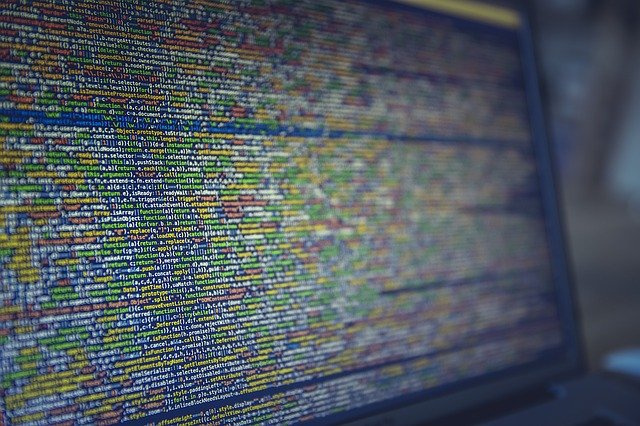In this digital age, email has become an essential means of communication. We rely on it for work, personal correspondence and everything in between. However, with the convenience comes a risk – sensitive information can easily fall into the wrong hands if not properly protected. This is where encryption comes in! Encrypting your email attachments adds another layer of security to your communication and ensures that only the intended recipient can access your message. In this blog post, we’ll take you through why and how to encrypt email attachments like a pro!
What is encryption?
Encryption is the process of converting plain text or data into a secret code using complex algorithms. This technique helps prevent unauthorized access and ensures that only authorized parties can read the information.
The encrypted data can only be decrypted by someone who has the encryption key, which is a unique piece of information required to decode the message. Encryption provides an added layer of security to sensitive information, such as personal details, financial transactions, medical records, and business secrets.
There are different levels of encryption available nowadays, ranging from basic to highly advanced techniques used by government agencies and large corporations. The strength of encryption depends on factors like key length and algorithm complexity.
In today’s digital age where cyber threats are rampant, encrypting your data has become more important than ever before. Whether it’s email attachments or cloud storage files, encrypting your sensitive data will help keep it safe from prying eyes and ensure that you retain control over who has access to it.
Why encrypt email attachments?
In today’s digital age, sending and receiving emails has become an essential part of our daily routine. Emails often contain sensitive information that should be kept confidential and secure from prying eyes. This is where email encryption comes in.
Email encryption refers to the process of scrambling the contents of an email message so that it can only be read by authorized recipients who have the decryption key or password. The same goes for email attachments – they too can be encrypted to ensure their security during transmission.
Encrypting your email attachments provides an additional layer of protection against unauthorized access, interception, and theft. It prevents hackers from accessing your data while it is being transmitted over unsecured networks such as public Wi-Fi hotspots.
Moreover, encrypting your email attachments ensures compliance with legal requirements related to data privacy and security. For instance, if you are handling sensitive customer information or healthcare records, then it is mandatory to use encryption technology when transmitting them via emails.
Encrypting your email attachments adds a crucial layer of protection against cyber threats and helps safeguard your personal and business-related information.
How to encrypt email attachments
Encrypting email attachments is a crucial step in securing sensitive information that you send over the internet. Fortunately, it’s easy to do and takes only a few steps. Here’s how to encrypt an email attachment:
1. Compress your file: Before encrypting, compress your file using software like WinZip or 7-Zip. This will reduce its size and make it easier to transmit.
2. Choose encryption method: You can use either symmetric key encryption or public-key encryption for sending encrypted emails.
3. Symmetric Key Encryption: Use this method when both parties have access to the same password or key used in encrypting and decrypting messages.
4. Public-Key Encryption: This method requires each party to have their own private key (kept secret) and a corresponding public key (shared with others).
5. Send Your Encrypted Email Attachment: After selecting your preferred encryption method, attach the compressed file, type in your message if necessary, then enter the recipient’s email address(es), add any additional instructions you may want them to know before hitting “send.”
By following these simple steps on how to encrypt email attachments properly, you can ensure that all confidential information remains secure from unauthorized access while being transmitted over email networks.
Tips for encrypting email attachments
When it comes to encrypting email attachments, there are a few tips that can help ensure your sensitive information stays secure. First and foremost, choose a strong encryption method that will provide the right level of security for your needs.
Consider using a reputable encryption software or service to help streamline the process and make sure everything is properly secured. It’s also important to use strong passwords and passphrases when encrypting files, as this can further enhance their security.
Another tip is to only share encrypted files with trusted parties who require access to them. Avoid sharing sensitive information via unsecured channels such as social media or public Wi-Fi networks.
Be sure to keep up-to-date on best practices for email encryption and regularly review your processes for any potential vulnerabilities. By taking these steps and being proactive about securing your data, you can feel confident in sending emails with sensitive attachments without worrying about compromising its confidentiality.
Conclusion
In today’s digital age, email is one of the most widely used communication platforms. However, it is also vulnerable to cyber-attacks and breaches that can result in sensitive information falling into the wrong hands. Encrypting your email attachments adds an additional layer of security to protect your data.
We have outlined some simple steps on how to encrypt email attachments effectively. It may seem like a small step, but it could make all the difference in keeping your information safe from prying eyes.
Remember always to use strong passwords and keep them secure, avoid clicking on suspicious links or downloading files from unknown sources and regularly update your anti-virus software.
Take control of your online privacy by taking these necessary safety measures when sending any file or document via email. While no system is 100% foolproof, following these tips will help you keep your confidential messages safe and secure.









FIND US ON SOCIALS